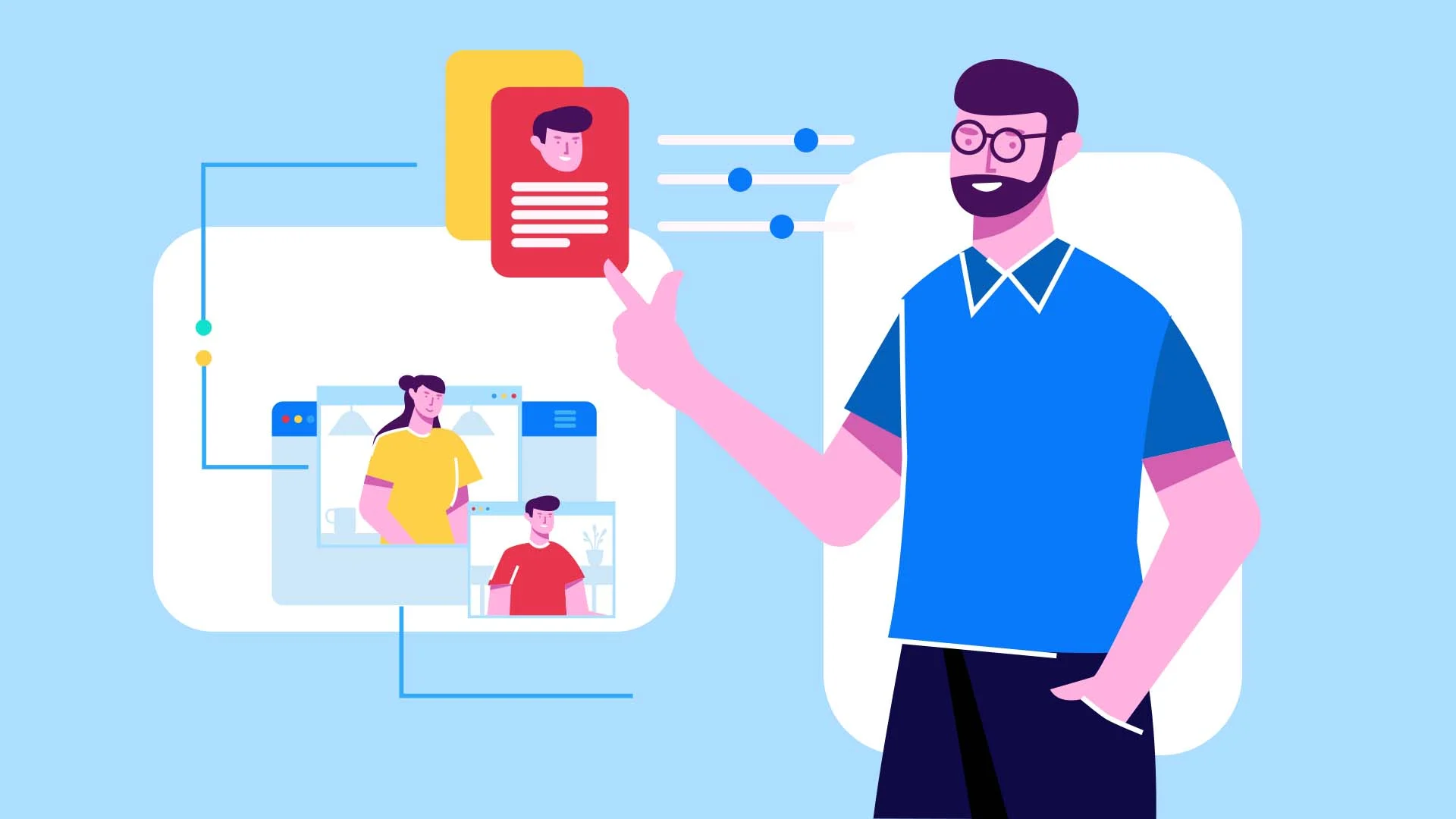Personalization and Customer Experience: Leveraging Data and AI to Create Highly Personalized Marketing Campaigns
 Yash Mandhare
Yash Mandhare
In the rapidly evolving digital landscape, personalization has become a cornerstone of effective marketing. Today’s consumers expect experiences tailored specifically to their interests, behaviors, and needs. This shift is driven by advancements in data analytics and artificial intelligence (AI), which enable marketers to deliver hyper-personalized content and experiences at scale. In this blog, we will explore how to use data and AI to create highly personalized marketing campaigns, enhancing customer experience and driving engagement.
The Power of Personalization in Digital Marketing
Personalization in digital marketing is more than just a trend; it’s a necessity. Personalized marketing involves tailoring content, offers, and messages to individual customers based on their preferences, behaviors, and interactions with your brand. This approach not only enhances customer experience but also boosts engagement, conversion rates, and customer loyalty.
Why Personalization Matters
Increased Engagement: Personalized content is more relevant to the consumer, leading to higher engagement rates. According to a study by Epsilon, 80% of consumers are more likely to make a purchase when brands offer personalized experiences.
Improved Customer Experience: Personalization makes customers feel valued and understood, enhancing their overall experience with your brand. This emotional connection fosters trust and loyalty.
Higher Conversion Rates: Personalized marketing messages are more effective at driving conversions. Data from Segment indicates that personalized emails have an open rate 29% higher and a click-through rate 41% higher than non-personalized emails.
Better ROI: Personalized marketing campaigns yield better return on investment (ROI). According to McKinsey, companies that excel at personalization generate 40% more revenue from their marketing activities than their competitors.
Harnessing the Power of Data and AI for Personalization
1. Collecting and Analyzing Customer Data
To personalize marketing effectively, you need to collect and analyze various types of customer data:
1.1. Types of Customer Data
Behavioral Data: Information about customer interactions with your website, emails, social media, and other touchpoints.
Demographic Data: Age, gender, location, and other demographic details.
Transactional Data: Purchase history, order frequency, and average order value.
Psychographic Data: Interests, values, lifestyle, and personality traits.
1.2. Data Collection Tools
CRM Systems: Tools like Salesforce, HubSpot, and Zoho CRM help track customer interactions and preferences.
Analytics Tools: Google Analytics, Adobe Analytics, and Mixpanel provide insights into customer behavior and website performance.
Data Management Platforms (DMPs): Platforms like BlueKai and Lotame help collect and organize customer data from multiple sources.
2. Implementing AI in Personalization
AI technologies enhance the ability to analyze data and deliver personalized experiences. Here’s how you can integrate AI into your personalization strategy:
2.1. AI-Powered Analytics
AI-driven analytics tools can analyze vast amounts of data to uncover patterns and insights that humans might miss. These tools use machine learning algorithms to predict customer behavior, preferences, and trends. Examples include:
Predictive Analytics: Tools like IBM Watson and SAS Analytics predict future customer behavior based on historical data.
Natural Language Processing (NLP): NLP technologies, such as those offered by Google Cloud Natural Language and IBM Watson NLP, analyze customer feedback, reviews, and social media posts to gauge sentiment and preferences.
2.2. Machine Learning Algorithms
Machine learning algorithms play a crucial role in personalizing marketing campaigns. These algorithms can segment customers, predict their actions, and recommend personalized content. Key machine learning techniques include:
Collaborative Filtering: Used in recommendation engines, this technique suggests products based on the preferences of similar users. For example, Netflix and Amazon use collaborative filtering to recommend movies and products.
Regression Analysis: Helps predict continuous outcomes, such as the likelihood of a customer making a purchase. Tools like Google Cloud AutoML and Azure Machine Learning provide powerful regression analysis capabilities.
3. Creating Personalized Content and Experiences
With data and AI in place, you can now create personalized content and experiences. Here’s how to do it effectively:
3.1. Personalizing Email Marketing
Email marketing is one of the most effective channels for personalization. Use AI to segment your email list and tailor content to individual preferences:
Dynamic Content: Use tools like Mailchimp and ActiveCampaign to insert dynamic content into emails based on customer behavior and preferences.
Behavioral Triggers: Set up automated email campaigns triggered by customer actions, such as cart abandonment or product browsing. Tools like Drip and Omnisend make this process seamless.
3.2. Customizing Website Experiences
Enhance website experiences by personalizing content, product recommendations, and user interfaces:
Personalized Homepage: Use AI to display personalized product recommendations, promotions, and content based on user behavior. Tools like Dynamic Yield and Optimizely can help you create personalized web experiences.
Behavioral Targeting: Implement behavioral targeting to show relevant content and offers to users based on their browsing history. Platforms like Adobe Target and Qubit offer advanced behavioral targeting features.
3.3. Leveraging Social Media for Personalization
Social media platforms are rich sources of customer data and engagement opportunities. Use AI to personalize your social media marketing efforts:
Targeted Ads: Use AI to create highly targeted social media ads based on user demographics, interests, and behaviors. Facebook Ads Manager and LinkedIn Ads offer robust targeting options.
Content Curation: Use AI-driven tools like BuzzSumo and Feedly to curate and share content that resonates with your audience’s interests and preferences.
4. Enhancing Customer Service with AI
AI can also enhance your customer service, providing personalized support and improving customer satisfaction:
4.1. Chatbots and Virtual Assistants
Implement AI-powered chatbots and virtual assistants to provide instant, personalized responses to customer inquiries:
Chatbot Platforms: Tools like Intercom, Drift, and Chatfuel enable you to build conversational bots that understand and respond to customer queries in real-time.
Natural Language Understanding (NLU): Use NLU technologies to enhance chatbot interactions, allowing them to understand and respond to customer questions with contextual understanding.
4.2. AI-Driven Customer Support
Enhance customer support with AI tools that can analyze customer queries, provide automated responses, and route complex issues to human agents:
Support Ticketing Systems: Integrate AI with your support ticketing system to prioritize and resolve tickets faster. Tools like Zendesk and Freshdesk offer AI-powered support features.
Sentiment Analysis: Use AI to analyze customer interactions and gauge sentiment, helping you address issues proactively. Tools like MonkeyLearn and Lexalytics provide sentiment analysis capabilities.
Best Practices for Implementing Personalization and AI
1. Start with a Clear Strategy
Develop a clear personalization strategy that aligns with your business goals. Identify your target audience, set specific objectives, and outline the key metrics for measuring success.
2. Invest in the Right Technology
Choose the right tools and platforms that integrate well with your existing systems. Consider factors such as ease of use, scalability, and customer support when selecting technology solutions.
3. Prioritize Data Privacy and Compliance
Ensure that your data collection and personalization practices comply with regulations such as GDPR, CCPA, and other data privacy laws. Obtain explicit consent from customers and provide transparent privacy policies.
4. Test and Optimize Continuously
Regularly test and analyze the performance of your personalized campaigns. Use A/B testing, analytics, and customer feedback to refine your strategies and improve results over time.
Case Studies: Successful Personalization Campaigns
1. Amazon’s Product Recommendations
Amazon’s recommendation engine uses machine learning algorithms to analyze customer behavior and purchase history, providing personalized product suggestions. This approach has significantly increased customer engagement and sales, with personalized recommendations driving 35% of Amazon’s revenue.
2. Netflix’s Personalized Content
Netflix leverages AI and machine learning to analyze viewing habits and preferences, creating personalized content recommendations for each user. This personalization has been instrumental in Netflix’s success, with personalized recommendations contributing to 80% of content viewed on the platform.
3. Sephora’s AI-Powered Beauty Advisor
Sephora’s virtual Beauty Advisor uses AI to analyze customer preferences and skin type, recommending personalized products and beauty tips. This AI-driven approach has enhanced customer experience and increased online sales, with personalized recommendations boosting conversion rates by 20%.
Conclusion: Embrace the Future of Personalized Marketing
The future of digital marketing lies in personalization, driven by the power of data and AI. By leveraging these technologies, you can create highly personalized marketing campaigns that resonate with your audience, enhance customer experience, and drive business growth. Here are the key takeaways:
Collect and Analyze Data: Gather diverse customer data and use AI to analyze and uncover insights.
Implement AI Technologies: Integrate AI-powered analytics, machine learning, and chatbots to enhance personalization.
Create Personalized Content: Use AI to deliver tailored content, product recommendations, and customer experiences across all channels.
Enhance Customer Service: Implement AI-driven chatbots and support systems to provide instant, personalized customer support.
Start implementing these strategies today, and watch your marketing campaigns transform into powerful, customer-centric experiences that drive engagement, loyalty, and revenue. Embrace the future of personalized marketing, and stay ahead in the competitive digital landscape!